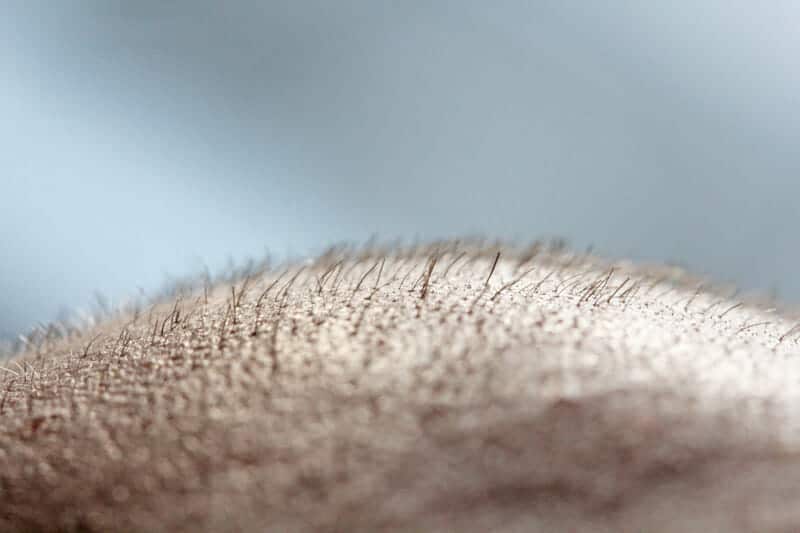The launch of Aseir Custom’s Auxano Grow has taken the entire hair loss industry by storm.
We have received an endless flood of visual testimonials from people who have experienced accelerated hair regrowth in the span of 30-60 days.
Which brings us to a critical question: How effective is Auxano Grow compared to other hair loss treatments, and does it do the job without any unwanted side effects?
Let’s take a look at the existing solutions on the market and see how effective they REALLY are!
Finasteride: Debunking The “DHT Causes Hair Loss” Myth
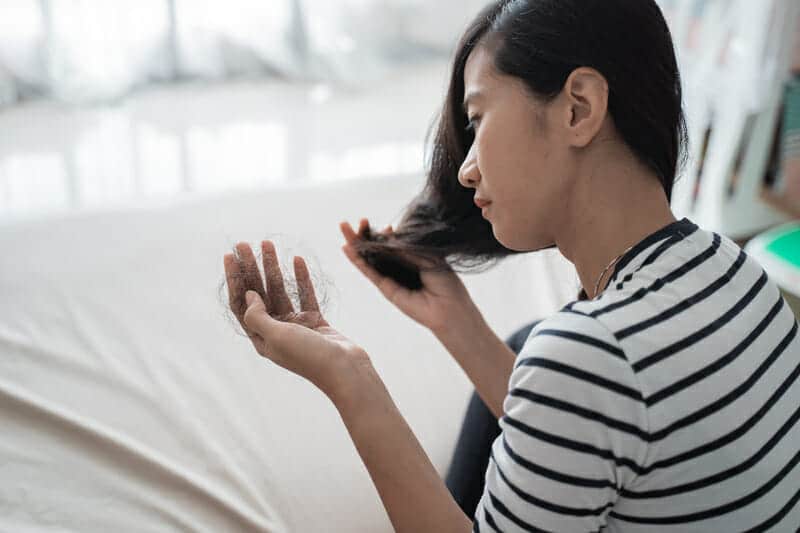
Finasteride (a.k.a. Propecia) is arguably the most popular prescription medication for hair loss, expected to rake in $130 million annually by 2026.
I want to tackle this medication first because the entire basis on which it is believed to work is wholly inaccurate.
As any hair loss expert knows, Finasteride’s primary mechanism of action involves inhibiting dihydrotestosterone (DHT) production:
“Finasteride (Propecia® and others) is a specific type II 5-alpha reductase inhibitor. That is, it inhibits the enzyme responsible for regulating the conversion of testosterone to dihydrotestosterone (DHT). By reducing DHT levels in the scalp, the drug decreases DHT’s effects on the hair follicles, reversing the process of hair loss.”
The premise is straightforward – by blocking the production of DHT, hair follicles stop shrinking and further hair loss is prevented (ideally allowing for hair growth).
This hypothesis is so well accepted in the cosmetics industry that it is hardly questioned by aestheticians or medical doctors.
Yet even then the influence of DHT on hair loss is questionable at best, as it is essential for hair growth in other parts of your body.
But unless you read between the lines very carefully, you won’t realize that something much deeper is happening:
“Increased serum concentrations of DHT were observed in patients with androgenetic alopecia (17 women, 5 men), but also in the control group. The differences in mean values of DHT were not significant according to the types of alopecia and the control group. Increased serum concentrations of DHT were not correlated with the advance of alopecia.”
And the conclusion from the same study above, where patients with or without androgenetic alopecia (i.e. hair loss due to genetics) were examined:
“Based on the results of our study and others, the most important factors would appear to be the genetically-determined sensitivity of the follicles to DHT and their different reactions to androgen concentration.”
I really want to nail this point down – Healthline does a great job of summarizing what the science actually says about DHT and hair loss:
“It’s not the amount of testosterone or DHT that causes baldness; it’s the sensitivity of your hair follicles. That sensitivity is determined by genetics.
The [androgen receptor] gene makes the receptor on hair follicles that interact with testosterone and DHT. If your receptors are particularly sensitive, they are more easily triggered by even small amounts of DHT, and hair loss occurs more easily as a result. Other genes may also play a part.”
That’s certainly an under-exaggeration – 250+ genes associated with hair loss says an awful lot!
One university professor goes as far as to suggest that the shape of your head, which is entirely genetic, explains why DHT makes hair follicles thinner on your head and thicker on every other part of your body.
His “gravity theory” states that the weight of the scalp on your hair follicles increases over time because the underlying fat tissue in your scalp becomes thinner over time:
“As the cushion decreases, the hair follicle must strive against higher pressure, requiring more testosterone to achieve normal growth. This “local demand” leads to a buildup of DHT levels in the scalp, but not in the bloodstream.
…The hair growth cycle accelerates in response to DHT, but it’s not enough to overcome the increased pressure. Over time, the hair follicle becomes smaller and smaller, resulting in progressively increasing hair loss.”
(By the way…this explains why DHT actually promotes hair growth in other parts of your body, as I mentioned earlier)
In other words…elevated DHT is NOT a direct causal effect, but a downstream secondary effect of something else.
And what could that primary cause be?
As I mentioned in the very first article I wrote about Auxano Grow, there are MULTIPLE causes of hair loss simultaneously taking effect at the same time.
But I do believe there are some major ones that do not receive enough attention when you put genetics aside.
Primarily, we need to consider chronic inflammation and the role it plays in premature hair loss:
“Microinflammations of the scalp are also a leading contributor to hair thinning and hair loss. They occur when the skin around your hair follicles becomes inflamed and weakens the hair root, making you more vulnerable to hereditary hair loss.
…There’s growing evidence that microinflammations of the scalp are involved in most common scalp disorders – from thinning hair and dandruff, to scalp dryness, itchiness and sensitivity.”
Many people do not know that DHT is elevated as part of the body’s natural inflammatory response when wounds are being healed:
“(1) chronic scalp tension transmitted from the galea aponeurotica induces an inflammatory response in androgenic alopecia-prone tissues; (2) dihydrotestosterone increases in androgenic alopecia-prone tissues as part of this inflammatory response; and (3) dihydrotestosterone does not directly miniaturize hair follicles.
Rather, dihydrotestosterone is a co-mediator of tissue dermal sheath thickening, perifollicular fibrosis, and calcification – three chronic, progressive conditions concomitant with androgenic alopecia progression”
This study reinforces my previous points about genetics playing a major role in hair loss… in this scenario, the inflammation is induced by chronic contraction of the muscles in your scalp connected to the galea aponeurotica (i.e. the connective tissue that prevents stretching of the scalp).
Don’t forget about cellular dysfunction of the hair follicle cells themselves, which can also lead to age-associated hair loss through cellular senescence.
All in all, what we’re really trying to treat is hair follicle damage.
Think about it this way…
This is another example of the classic “treat the symptom, not the root cause” problem that is prevalent in the corrupt healthcare industry.
Increased DHT production is a downstream result of the inflammation response that takes place, which arises from underlying health conditions and/or poor genetics.
Blocking the production of DHT may reduce the inflammatory response yet the root cause of inflammation remains untreated.
So the problem remains unsolved and you are now messing with your hormonal system, thereby setting yourself up for other unwanted side effects.
Speaking of side effects…the men reading this article may find themselves struggling with their bedroom performance if they’re using Finasteride:
“Side effects of finasteride include lowered libido, erectile dysfunction, reduced ejaculatory volume, temporary reduction in sperm count, testicular pain, depression and gynecomastia”
Many medical doctors would brush these side effects off and tell you that they rarely happen, if at all.
They may even quote several clinical studies which promote daily use of Finasteride as safe and effective…except there were some major safety issues with said studies:
Of 34 clinical trials, none had adequate safety reporting, 19 were partially adequate, 12 were inadequate, and 3 reported no adverse events…Available toxicity information from clinical trials of finasteride in men with [androgenic alopecia] is very limited, is of poor quality, and seems to be systematically biased”
Moreover, we have known about Finasteride’s disastrous effects for DECADES and there are a shockingly high number of men whose sexual health has been ruined by this drug:
“Starting in the 1990s, independent studies described sexual adverse events such as erectile dysfunction (ED), decreased ejaculate volume, and decreased libido in young men who used finasteride against MPHL.
In some men, these side effects persisted for months or even years after finasteride discontinuation. Additionally, several case reports described patients on low-dose finasteride with impaired spermatogenesis, which was reversed after drug cessation”
Sure, you can stop taking Finasteride and have these effects go away.
But then you’ll have to make a choice between which “head” you want functioning properly: The one below your belt, or the one above your shoulders.
“The effect of finasteride on the prostate and scalp will only last as long as the medicine is taken. When it is stopped, the prostate begins to grow again and the hair will be lost.”
Oh, and I haven’t even started the conversation on Post-Finasteride Syndrome:
“Post-finasteride syndrome (PFS) describes persistent sexual, neurological, physical and mental adverse reactions in patients who have taken finasteride, a 5-alpha reductase type II enzyme inhibitor used to treat hair loss (under the brand name Propecia or generics) or enlarged prostate (Proscar or generics).
Unfortunately, PFS is a condition with no known cure and few, if any, effective treatments.”
Or the questionable effectiveness of consistent Finasteride use over several years:
“While 277 more hairs per square inch may seem like a lot, a cosmetology text notes that the average number of hairs per square inch is 2,200 (Milady’s Standard Cosmetology, p210), though this figure varies by hair color and some other sources provide different numbers.
Using 2,200 as a rough number, however, it can be calculated that after 5 years of faithful use of Propecia, those threatened with baldness can expect somewhat more than a 10% improvement over what they would have experienced without any treatment.”
Long story short: You’re much better off avoiding the headache that is known as Finasteride.
(NOTE – Dutasteride is another 5-alpha reductase enzyme inhibitor that works exactly the same way as Finasteride, in case you were wondering)
Minoxidil: Chained to “Hairy Handcuffs” for Life
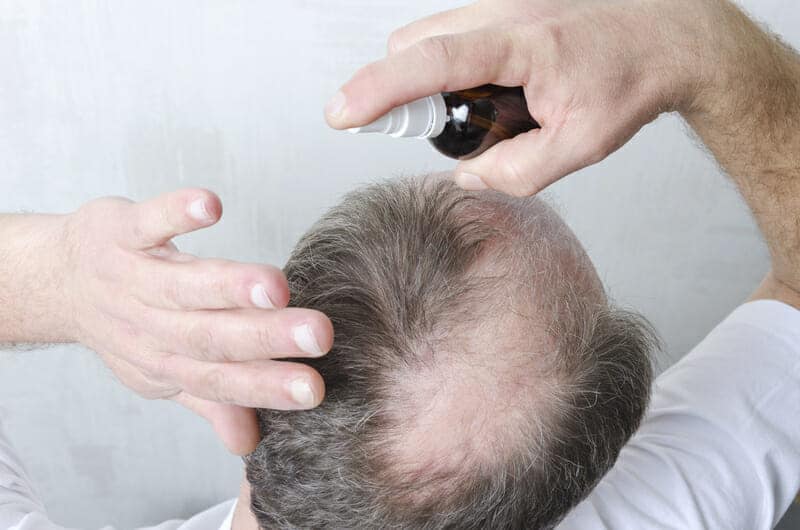
Minoxidil (a.k.a. Rogaine) is another animal altogether, encapsulating a far larger share of the hair loss market at $880 million USD in 2017 alone (and a projected $1.2 billion in 2024).
This non-prescription medication’s mechanism of action is not quite known, but a few factors appear to be responsible for its purported effects:
“In animal studies, topical minoxidil shortens telogen, causing premature entry of resting hair follicles into anagen [i.e. active growth phase of the hair follicles], and it probably has a similar action in humans. Minoxidil may also cause prolongation of anagen and increases hair follicle size.
Orally administered minoxidil lowers blood pressure by relaxing vascular smooth muscle through the action of its sulphated metabolite, minoxidil sulphate, as an opener of sarcolemmal KATP channels”
The increased blood flow could explain why Minoxidil has some degree of effectiveness, as it would allow more nutrients and oxygen to be delivered to the hair follicles:
“Researchers at Massachusetts General Hospital (MGH) have been able to grow hair faster and thicker on mice thanks to a protein that promotes blood vessel growth in their skin [VEGF]. The mouse hair follicles – while no greater in number than those of normal mice – are individually bigger. Collectively, they increase the total volume of hair by 70 percent.”
(Fun Fact: Minoxidil was originally an anti-hypertensive drug for patients with high blood pressure, but one of its side effects happened to be hair growth)
However, there are several precautions you have to keep in mind before you start using it:
“To maintain results, it must be used continuously — if you stop using the medication, the new hair growth may reverse, and hair loss will continue”
“Minoxidil tends to work best on younger men (meaning, those under age 40) who have been balding for less than five years. Once hair loss spreads over a large area and has persisted for a long time, minoxidil is less likely to produce benefits”
“Minoxidil is better at stopping or slowing hair loss than regrowing hair. Hair regrowth is more of a secondary gain; stopping hair loss is more likely. But about 40% of men and 25% of women can experience some regrowth with minoxidil.”
Just like Finasteride, you’re eternally doomed to rely on Minoxidil for doing little more than reversing hair loss while praying for a fractional amount of hair growth.
A lifetime of payments for something that treats hair loss without curing it, all while waiting several months before you see an ounce of progress.
Again, we aren’t dealing with the ROOT cause of hair loss: Cellular dysfunction of the follicle and the supporting skin structures due to reduced blood flow and a bodily state of chronic inflammation.
Even if we were to fix the issue of blood flow, inflammation may still be present.
There’s even a condition called vasculitis that specifically refers to inflammation of the blood vessels!
Oh, one more thing: Common and serious side effects of Minoxidil include a red itchy scalp, headache, nausea, dizziness, fatigue, and vomiting.
So far, neither Minoxidil nor Finasteride (both of which are FDA-approved treatments) seem to be safe or effective for reversing hair loss.
Hair Transplant Surgery: Painful, Expensive, and Ugly
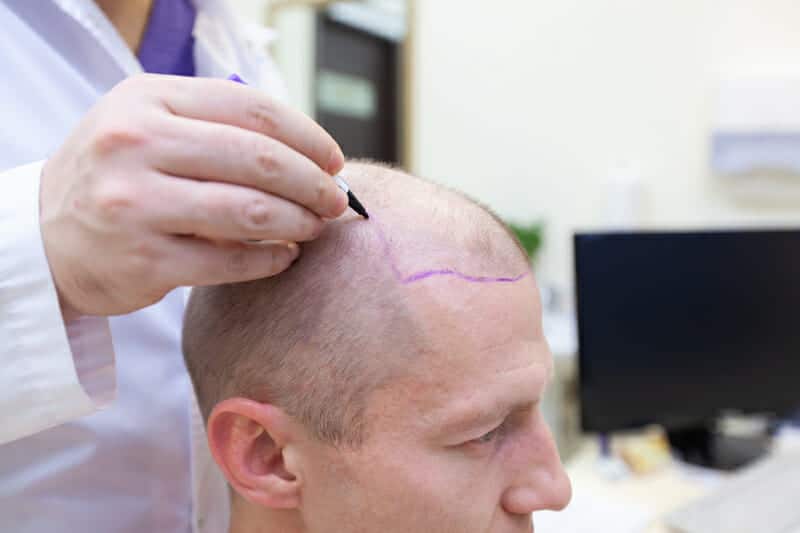
Here’s how a hair transplant works:
Follicles from an area of your head where the hair is especially dense (i.e. the “donor” area) will get harvested and implanted into the area of your scalp where hair loss is occurring.
There are two popular hair transplant procedures which go about this in slightly different ways:
“Follicular unit strip surgery (FUSS). The surgeon will remove a strip of skin from the donor area and close the incision with stitches. They will then use a microscope to separate the donor skin into tiny follicular units that contain one or several hair follicles and insert these units into the desired area.”
“Follicular unit extraction (FUE). The surgeon will use a tiny punch tool to remove follicles from the donor area. Although this procedure will still lead to some scarring, it may be less noticeable, and the person will not usually require stitches.”
As you may have guessed by now, a hair transplant only works when you have USABLE hair on your scalp… which is why it’s useless against hair loss that is induced by major medical conditions or surgical operations done in the past.
For more information about how hair transplants have evolved since their pioneering in the 1950s, I highly recommend watching this short video:
3
The downsides of hair transplants are far too numerous to list, but let me summarize the red flags for you:
- Get ready to pay $4,000-$15,000 for a single session without ANY financial aid from health insurance (that’s not including medications you’ll be prescribed after the surgery)
- Get ready to take antibotics for a good while after your operation – you may even be prescribed Minoxidil and Finasteride!
- A single session takes several hours, sometimes as much as several DAYS
- The transplanted hair will gradually thin over time
- It will take ~3-4 months for 10-80% of the transplanted hair to grow back fully (results take a LONG time to appear)
- You may need more than one hair transplant, as the root cause of the hair loss remains completely unaddressed
- You will spend the first 2-3 days with your head in a dresser to avoid potential infections
I haven’t even gotten started on the numerous side effects of hair transplants that take place if you don’t have a competent surgeon handling the job:
- Severe bleeding in inflamed areas of the scalp
- Scalp swells up and becomes itchy
- Lack of sensation in the treated area (up to 6 months’ recovery time)
- Obvious mismatch of transplanted hair versus what was already on your scalp
- Drainage of pus around the site of surgery
There IS an upper limit to how many times you can perform hair transplants, else you risk permanently damaging your scalp tissue:
“Too many incisions means too much trauma to nerves and blood supply. When the blood supply is damaged that badly, the skin in that part of the scalp is “cut off” from all nourishment and two things happen:
1) the grafts will receive no blood supply and will not grow;
2) the skin will experience “necrosis” or skin death; the area will die, turn black, fall off, and leave a wound which may require additional treatment and a bad scar which will likely require future grafting — and there is no guarantee the scarred area will accept the grafts”
If you want to go deep down the rabbit hole and see EVERY possible thing that can (and often does) go wrong with hair transplants, this published paper is one of the best I was able to find in the medical literature.
(WARNING – the paper I linked to contains some very graphic images. View them at your own risk!)
As much as I dug into Minoxidil and Finasteride earlier on, hair transplants are the one thing I absolutely will not recommend to anybody regardless of their circumstances.
The only surgical procedure I would recommend that’s non-invasive and painless for exceptional cases is Vantis Follicular Replication.
Platelet-Rich Plasma (PRP): Close But No Cigar

One of the newer hair loss modalities to gain popularity in the past 10 years are platelet-rich plasma (PRP) injections.
If you went to your local dermatologist and asked for a PRP injection to treat your hair problems, here is what would happen:
“…..blood is drawn from your arm, then spun down in a centrifuge (a machine that spins at high speeds to help separate blood components). After centrifuging, the plasma rises to the top, and the lower part of the plasma is the PRP.
Your own PRP is collected, then injected into multiple areas of hair loss across your scalp. The usual treatment plan involves three sessions, approximately one month apart, followed by maintenance sessions every three to six months to keep up the results”
Unlike a hair transplant, PRP injections are non-surgical and only take about 90 minutes per session.
However, you WILL need to have a maintenance PRP injection every 4-6 months to keep your hair growth results.
This was observed in a 12-month study where 3 months after the PRP treatment, hair density peaked and then slowly reduced over time:
“Hair loss reduced and at 3 months it reached normal levels. Hair density reached a peak at 3 months (170.70 ± 37.81, P < 0.001). At 6 months and at 1 year, it was significantly increased, 156.25 ± 37.75 (P < 0.001) and 153.70 ± 39.92 (P < 0.001) respectively, comparing to baseline. P
atients were satisfied with a mean result rating of 7.1 on a scale of 1-10. No remarkable adverse effects were noted.”
But what could possibly be so special about platelets, the colorless blood cells that form clots to stop bleeding?
The idea behind PRP injections is that administering an extremely high concentration of platelets containing several potent growth factors will kickstart hair growth:
“Activation of alpha granules of platelets releases numerous proteins, including platelet-derived growth factor (PDGF), transforming growth factor (TGF), vascular endothelial growth factor (VEGF), insulin-like growth factor (IGF), epidermal growth factor (EGF) and interleukin (IL)-1.
It is hypothesised that growth factors released from platelets may act on stem cells in the bulge area of the follicles, stimulating the development of new follicles and promoting neovascularisation”
As this is a much more recent form of treatment, the evidence is not as abundant.
One systematic review published this year comparing PRP injections to adult stem cell therapy, Minoxodil, and Finasteride found it to be a safe and effective alternative that possessed fewer major side effects:
“In total, 84% of the studies reported a positive effect of PRP for AGA treatment. Among them, 50% of the studies demonstrated a statistically significant improvement using objective measures and 34% of the studies showed hair density and hair thickness improvement, although no p values or statistical analysis was described.
In total, 17% of the studies reported greater improvement in lower-grade AGA, while 8% noted increased improvement in higher-grade AGA. Only 17% of the studies reported that PRP was not effective in treating AGA.”
Despite the promise it shows, the majority of the published studies on PRP injections involve variables that are constantly changing: Injection techniques, frequency of injections, the spacing between injections, unique PRP preparations, session intervals, and so on.
Without an objective and standardized protocol that is consistently used to evaluate the usefulness of PRP injections for hair loss, we can’t say for sure how effective they are.
The side effects are a downside, but they’re nothing you wouldn’t expect from any treatment involving an injection (redness and pain at the injection site, itching, swelling, etc.).
But get this: For EACH PRP injection you get, you’re paying a good $500-$1,500.
And seeing as this procedure is purely cosmetic in nature, your health insurance will not cover a single penny of it.
What can I say? Sometimes, to win in the game of health, you have to pay to play.
The HairMax LaserComb: Too Soon to Say
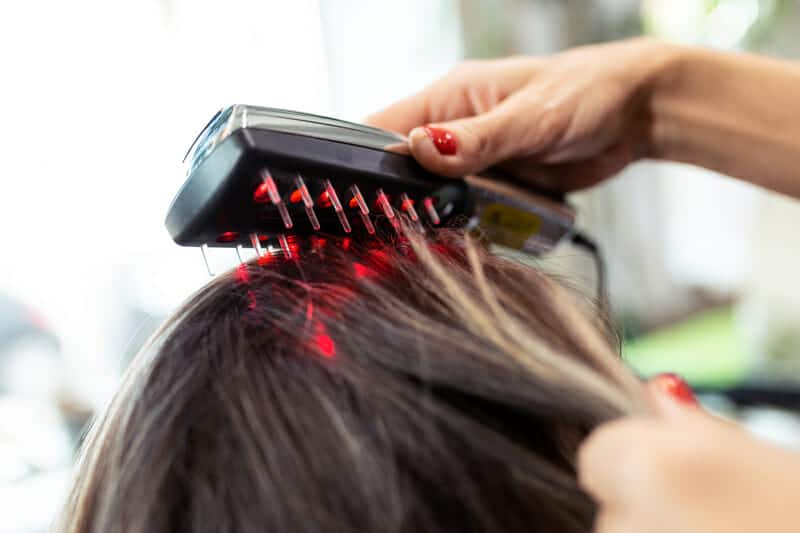
I wasn’t going to write about this treatment until somebody brought it to my attention, but I thought it was worth talking about for a brief moment.
The HairMax LaserComb is a medical device that has been cleared by the Food and Drug Administration to treat androgenic alopecia.
It works in the following manner, according to the official website:
“HairMax laser treatments work through the process of Photobiostimulation, delivering low level laser therapy (LLLT) to your hair follicles to activate them for stronger hair growth. Low Level Laser Therapy can help promote hair growth in five different ways.
1) Increases the production of ATP (Adenosine Triphosphate) which provides energy to the hair follicle
2) Helps stimulate and stabilize certain protein levels. When protein synthesis improves cell permeability, it allows the cells to accept nutrients and oxygen.
3) Increases blood circulation which provides a greater flow of vitamins, nutrients, and oxygen directly to the hair follicle, encouraging growth. It also helps remove waste such as DHT, a main contributor to hair loss.
4) Stimulates cell proliferation at the base of the follicle enabling it to enter the growth (Anagen) phase and rapidly reproduce new cells to grow new hair. This new thicker hair (terminal hair) replaces the thin, fine wispy hairs (miniaturized hair) of pattern hair loss.
5) Helps reduce inflammation of the hair follicle, which contributes to the miniaturization process that occurs with hair loss.”
You’ll notice that their focus on eliminating DHT shows a fundamental misunderstanding of how hair loss actually works, but I digress
A quick search on PubMed for this device yields only 8 results – two randomized controlled trials (here and here) that appear to show improved hair thickness and fullness in men and women with pattern hair loss or androgenetic alopecia.
No serious side effects have been reported to date, although that could change in the very near future.
Auxano Grow: The World’s #1 At-Home Hair Loss Reversal Solution

With every single hair loss treatment thoroughly examined, we can finally turn our eyes to why Auxano Grow works so well.
I’ve explained how its two main components – GHK-Cu and C60 – work synergistically to address the root causes of hair loss and promote hair growth via supporting the health of the hair follicles.
The science behind both agents are extensively discussed in this article I wrote, but I will summarize everything you need to know…
GHK-Cu and C60 have been shown in multiple studies to produce a regenerative effect through multiple methods of action, ranging from reducing chronic inflammation at the follicular root to improving mitochondrial function and enhancing blood flow in the dermis(angiogenesis).
Neither compound interferes with DHT production or the production of any androgen for that manner, which makes it entirely free of side effects that arise due to hormonal manipulation.
No loss of sexual function, no persistent pain, no injections required,
The side effects are virtually non-existent, with only one customer in the history of Aseir Custom reporting greasy pillows due to over application of the product.
Auxano Grow works to make your existing hair fuller and thicker while stimulating growth through the enlargement of shrinking hair follicles.
Once your hair has growth to a length you are happy with, you can stop the treatment and you actually keep the results.
In other words: The effects of Auxano Grow DO NOT disappear or reverse upon halting treatment.
I’ll admit that there are no scientific papers specifically examining the mutually supporting effects of C60 and GHK-Cu, but the results from our happy customers below don’t lie:
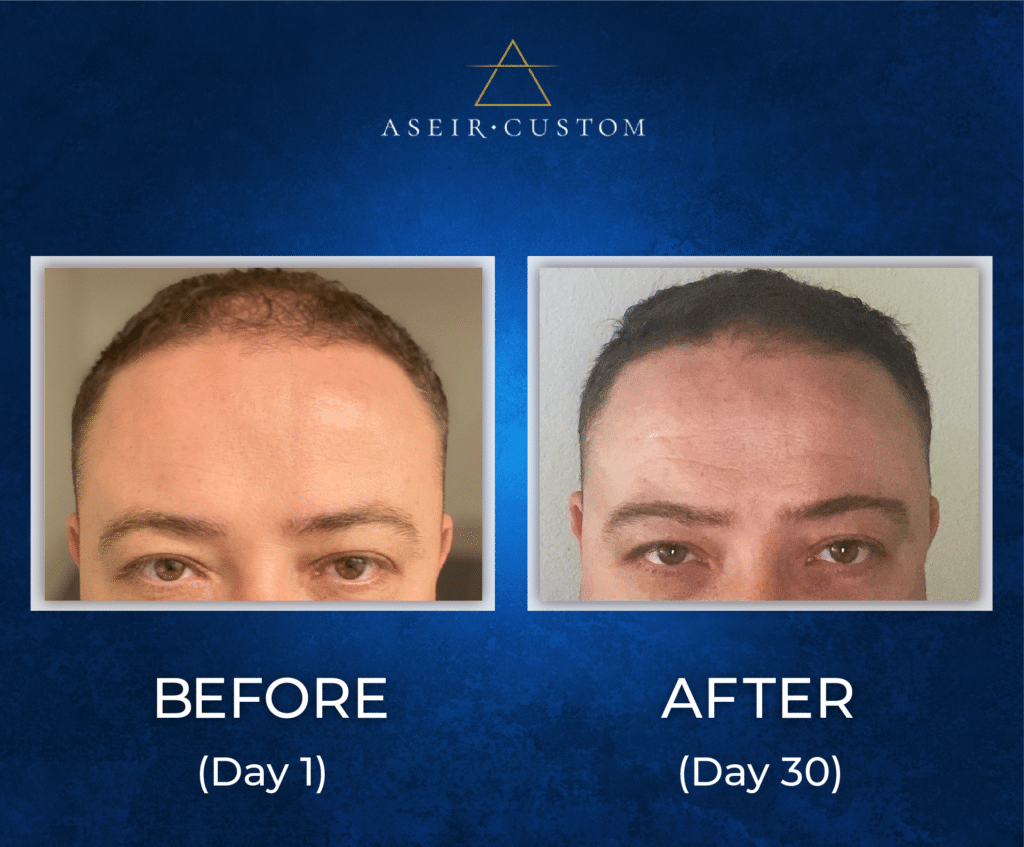
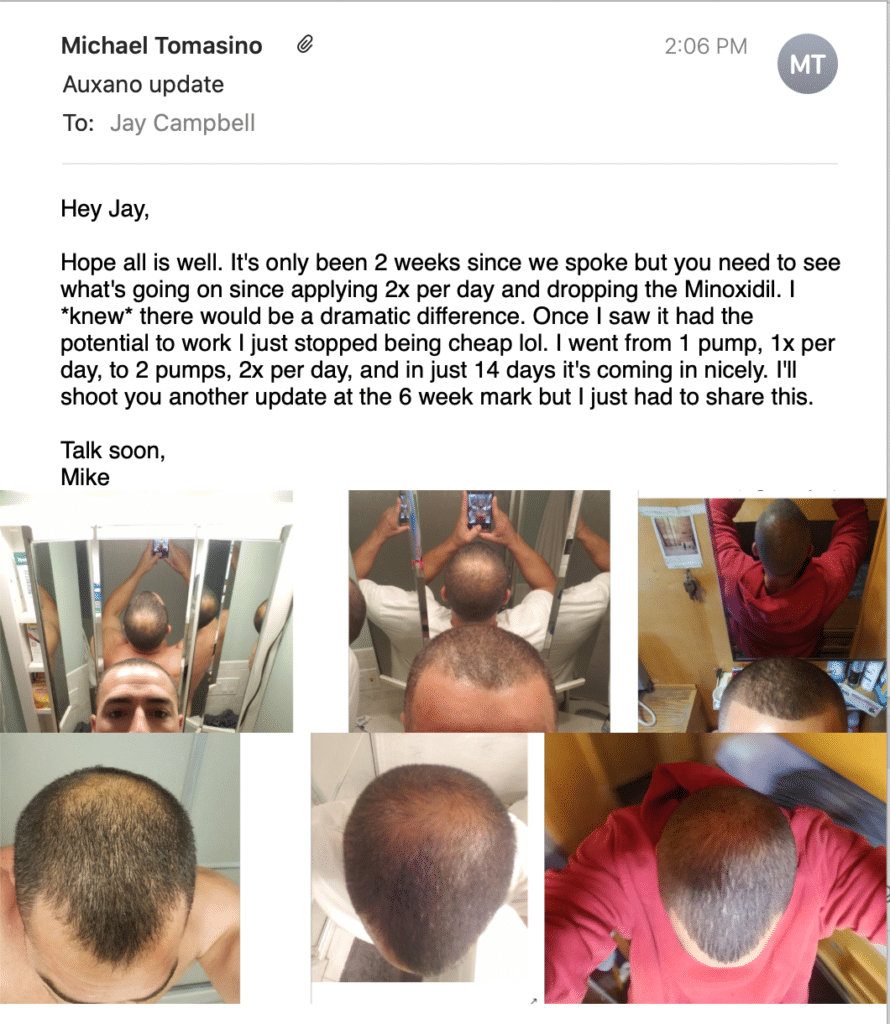
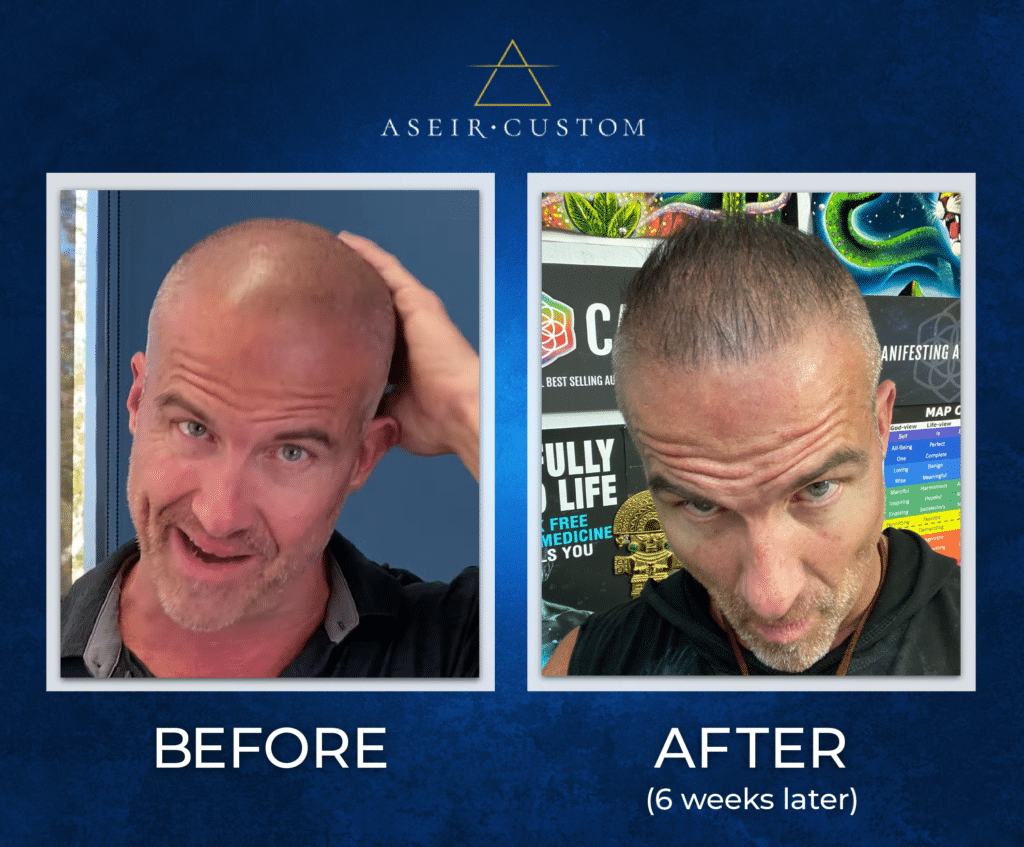
The AVERAGE time for our clients to get results is anywhere between 3-6 weeks.
And a single 30-60 day supply costs only $199, a far cry compared to every other medication or procedure you’ve read about in this article.
But there is one caveat you should know about, and I always mention this with any product I create or endorse…
BEST RESULTS ARE ACHIEVED WITH A FULLY OPTIMIZED LIFESTYLE!
The more dialed in your health is, the faster your results will come and the better they will be once they manifest.
Being obese and systemically inflamed will guarantee your inability to derive maximum value out of this premium at-home hair loss solution.
Even hair loss clinics who hawk their own products will be the FIRST to tell you that short of genetics, natural lifestyle factors play a huge role in reducing hair loss.
Scientists have even uncovered a never-before-studied link between gut health and hair loss:
“…the physiological effects of dysbiosis resulting from elevated stress, poor diet, drugs, and environmental triggers are implicated in multiple pathways contributing to hair loss.
Gut Permeability. Increase in gut permeability exposes follicles to greater antigenic/immune damage
Gut Inflammation. Increased circulation of pro-inflammatory cytokines that reach the hair follicles and can impact the growth cycle
Malabsorption. Poor nutrient assimilation due to a dysfunctional gut detracts from metabolic processes involved in hair synthesis”
The message should be clear by now…
Get your health in full working order, use Auxano Grow on your hair every single day(twice a day application will produce the fastest visible results), and watch your magnificent hair grow like a weed!
To celebrate the launch of our new website (Phase 2), we’re running a 333Hz Angelic Frequency Sale.
Spend $333 or more and automatically get 33% OFF Your Order!
Click Here to Order Auxano Grow and kill your hair loss for good!
And as always, Raise Your Vibration To Optimize Your Love Creation!
Subscribe to my email list so you can get exclusive access to the world’s best health optimization intel before anybody else finds out about it!

